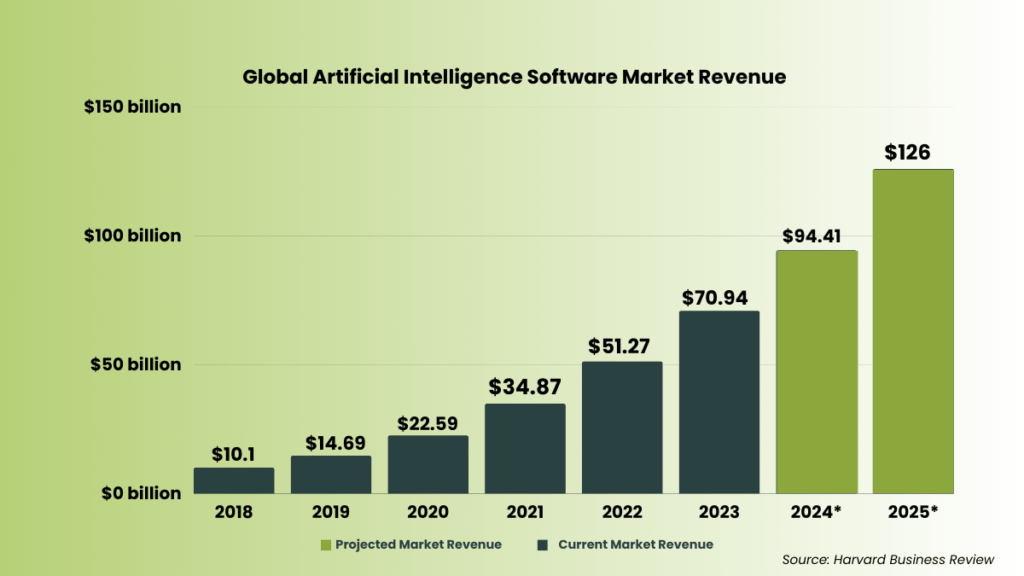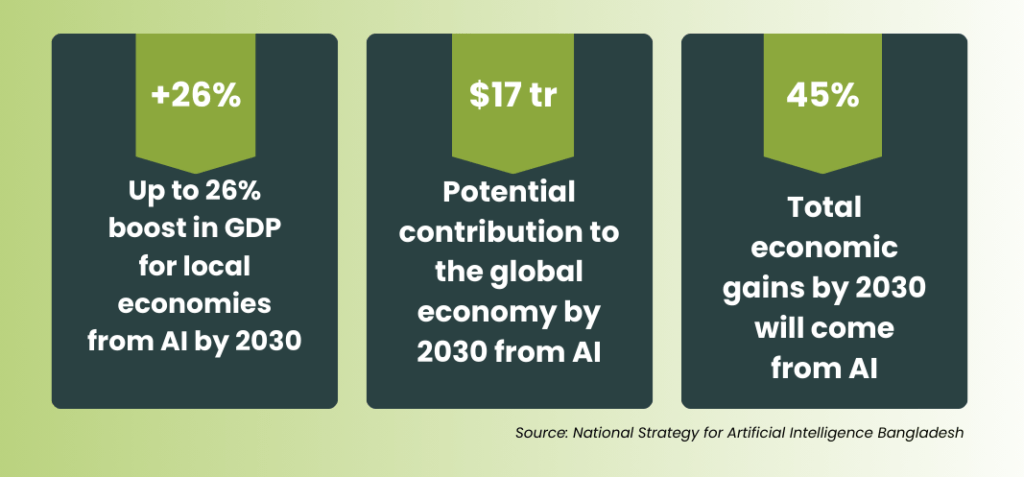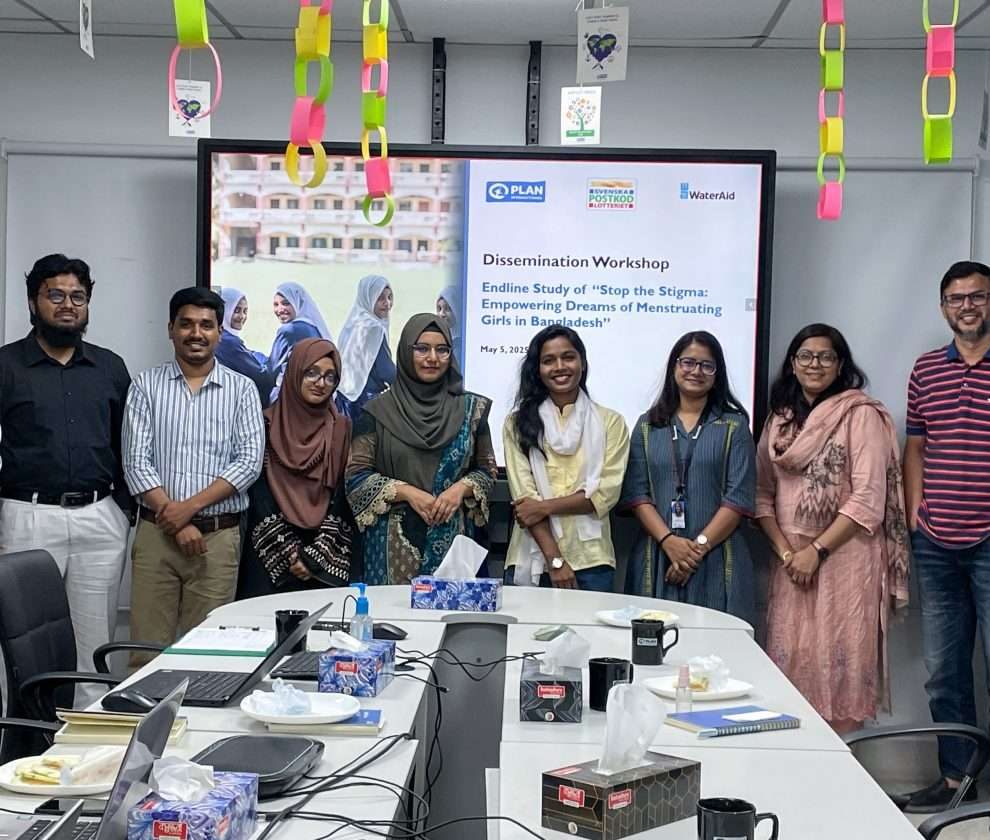Artificial intelligence (AI) is transforming industries across the world, promising a future of unprecedented productivity and innovation. According to a study, generative AI has the potential to generate value equivalent to $2.6 trillion to $4.4 trillion in global corporate profits annually.
Generative AI is expected to have its most significant influence on banking, high tech, and life sciences sectors, as a percentage of their total industry revenue. To illustrate, in the banking sector, the technology has the potential to generate added value ranging from $200 billion to $340 billion per year if all possible applications are adopted. However, this doesn’t imply that other industries won’t experience substantial benefits from deploying generative AI. In total, for instance, retail and consumer packaged goods companies could witness an annual increase in operating profits ranging from $400 billion to $660 billion through the utilization of generative AI, although these benefits may be distributed more broadly across the global workforce.
In this article we’ll be focusing on-
• Current Global Trends in the Adoption of Artificial Intelligence
Exploring the Evolving Landscape of AI Implementation Worldwide
• The Influence of AI on Developing Economies, Trade Efficiency, and Business Productivity
Analyzing the Pros & Cons of Artificial Intelligence on Emerging Markets and Commercial Performance
• Bangladesh’s Priority Sectors for AI Adoption to Improve Trade and Productivity
Highlighting the Critical Industries in Bangladesh Primed to Harness AI for Optimized Trade Processes and Enhanced Productivity.
AI Adoption Trends: A Global Perspective
Artificial intelligence (AI) is already being utilized across various industries, and its potential is far from fully realized, as indicated by an analysis conducted by Accenture and Frontier Economics. According to their findings, developed countries could witness a substantial boost in labor productivity, with an estimated increase of up to 40 percent by the year 2035, thanks to the impact of AI. Sweden is expected to experience a notable productivity surge of approximately 37 percent, while the United States (35 percent) and Japan (34 percent) are also poised to benefit significantly from AI advancements. In the case of Germany and Austria, AI has the potential to enhance labor productivity by approximately 30 percent over the next 15 years.

AI adoption in developing countries was already on the rise even before the pandemic. Lockdowns and travel restrictions have accelerated this trend. Examples include Clinicas de Azucar in Mexico using AI to improve health outcomes for diabetic patients, and India’s 1mg using AI to compare medical service prices. Embracing AI strategically can aid in post-pandemic recovery by boosting productivity and fostering innovative companies.
Tech startups worldwide are leveraging AI for innovative solutions. For instance, Azuri Technologies uses AI to optimize solar-powered energy for rural homes across Africa, securing a $26 million investment for expansion. In Kenya, M-Shwari offers unsecured loans online using AI to assess applicants, serving millions.
Startups globally are combining 3D printing and AI to build low-cost housing 10 times faster, a game-changer for rapidly urbanizing emerging markets.
A recent study discovered that emerging countries such as India, Brazil, China, and South Africa exhibit greater trust in and acceptance of AI technologies compared to developed nations like Japan and Finland. India leads in AI trust, boasting a remarkable 75% overall acceptance rate. Furthermore, the study found that emerging countries, particularly those in the BRICS group, display the highest level of engagement with AI. China stands out as the nation where the highest percentage of people (75%) use AI in their workplaces, followed by India at 66% and Brazil at 50%.
Conversely, citizens in developed countries appear to be more skeptical. Japan and Finland rank lowest on the trust scale, with only 23% expressing trust in AI systems. In the United States, while 40% reported having trust in artificial intelligence, only 24% were willing to use it.
AI’s Impact on the Global Economy and Labor
Positive Impacts: Robots and AI have substantial impacts on the global economy, affecting productivity, trade, and labor. They enhance productivity by enabling precise and cost-effective processes, resulting in lower production costs. Industrial robots and AI systems perform tasks faster and with greater precision. For instance, firms in Indonesia using automation are 49% more productive.
At the global level, adopting robots and AI leads to increased productivity, higher exports, and improved product quality. These technologies facilitate trade, particularly in sectors with high robotization. A 10% increase in robot density in developed countries correlates with a 12% rise in exports from developing nations.
Concerning labor and wages, robots and AI have three key effects. They displace routine work, negatively impacting less-skilled labor. However, they also boost productivity and competitiveness, positively affecting labor and wages. Additionally, these technologies reintegrate workers into a broader range of tasks, favoring skilled workers.
Negative Impacts: According to a recent Goldman Sachs report, the widespread adoption of automation and AI could potentially replace up to 300 million full-time jobs. Job displacement due to these technologies entails adjustment costs, as workers need to seek new roles within their firms or explore opportunities in different industries. However, the outlook is not uniformly bleak, as many occupations involve both routine and non-routine tasks. In the medium term, workers are likely to pivot towards tasks that machines cannot perform. Industrial robots, automation, and AI will impact the labor market differently. High-skilled workers, those in tech-intensive sectors, and those engaged in non-routine work may benefit, while less-educated workers, especially those in manual roles, face higher risks of job displacement. Despite mixed research findings on the overall labor market effects, there is consensus that the adoption of robots and AI will exacerbate inequality by favoring capital owners and skilled workers.
AI Initiatives in Bangladesh Across Key Sectors
Bangladesh is actively incorporating Artificial Intelligence (AI) into its digitization efforts, which began a decade ago. AI is poised to accelerate this transformation. Prime Minister Sheikh Hasina has announced plans for the rollout of 5G by 2023, along with the widespread adoption of future technologies like AI, robotics, big data, blockchain, and IoT.

In 2008, Bangladesh’s earnings from ICT exports were a modest $26 million. Today, this figure has surged to approximately $1 billion. Bangladesh has made substantial investments in nationwide infrastructure, establishing 16 Hi-Tech Parks, 7 Technology Parks, 12 IT Training & Incubation Centers, and a Tier-IV Data Center. Additionally, the launch of Bangabandhu-1, the country’s inaugural satellite, marked Bangladesh’s entry into the space sector in 2018.
Bangladesh is dedicated to addressing the critical challenges posed by the Sustainable Development Goals (SDGs) through the utilization of emerging Artificial Intelligence (AI) technology. The country has identified seven key priority sectors for this endeavor, which encompass public service improvement, manufacturing, agriculture, smart transportation, skill development and education, financial services and trade, as well as healthcare. Leveraging Artificial Intelligence (AI) across economic, research, industrial, agricultural, and medical domains will position our nation as the frontrunner in South Asia. We have identified eight national priority sectors for our AI initiatives, which include:
- AI for public service delivery,
- AI for manufacturing,
- AI for agriculture,
- AI for smart mobility and transportation,
- AI for skill & education,
- AI for finance & trade, and
- AI for health
AI FOR PUBLIC SERVICE DELIVERY
The Bangladesh government has introduced Eksheba Citizen, a comprehensive platform designed to provide easy access to all government services in the country. This centralized portal allows citizens to access a wide range of government services online using a single identity. The integration of AI into government and citizen services offers several advantages, including the reduction of administrative burdens, efficient delivery of government services to citizens, handling complex tasks effectively, and more.
- Scope of AI for Public Service Delivery
- Intelligent National Digital Information & Service Assistant
- AI-Based Recruitment & Evaluation System
- Paperless Office
- Virtual Service Location Assistant
- AI-Based Integrated Service Delivery Platform
- AI-Based Predictive Monitoring System
- AI-Based Training
- Life Event Service Delivery Platform
AI FOR MANUFACTURING
Artificial Intelligence (AI) and Machine Learning are driving the fourth industrial revolution. In Bangladesh, as per the 2018 Economic Profile, the Manufacturing sector constitutes a significant 29.2% of the total GDP. Integrating these cutting-edge technologies, along with data analytics, into manufacturing can lead to reduced raw material usage, enhanced efficiency, and streamlined supply chains. Smart Manufacturing encompasses elements such as overall equipment effectiveness (OEE) and adaptive manufacturing.
- Scope of AI for Manufacturing
- Predictive Maintenance
- Smart Quality Control
- Human-Robot Collaboration
- Generative Product Design
- Optimized Supply Chain
- Improved Customer Service
AI FOR AGRICULTURE
Bangladesh has taken several initiatives to support its agriculture sector, which contributes 14.2% to the GDP. This includes 245 agriculture information centers, a low-cost bank account service for farmers, and the krishi.gov.bd portal and hotline (3331) for farmer assistance. The country is also embracing technology with activities like digital agriculture platforms, IoT for crop monitoring, satellite-based crop stage mapping, hydroponics, vertical agriculture, and big data for predictive analysis.
AI holds promise for addressing challenges in agriculture, such as dynamic soil mapping, disease forecasting, automated harvesting prediction, image-based disease recognition, and health monitoring. These initiatives reflect Bangladesh’s potential to leverage AI for agricultural development and innovation.
- Scope of AI for Agriculture
- Crops, Soil and Livestock Monitoring
- Sowing Advisories
- Diseases Forecasting System for Crops
- Dynamic Soil Topology Map
- Picture Based Diseases Prediction & Medication
- Agricultural Robots
- Herbicide Optimization
- Reducing Farm Workload
- Precision Farming
- AI Sensors to Detect and Target Weeds While Deciding Which Herbicides to Apply Within the Right Buffer
- AI Solutions to Monitor and Suggest for Measurements for Crops, Soil, and Livestock
- Predictive Analysis Using AI for Real-Time Advisories to Farmers
AI FOR SMART MOBILITY & TRANSPORTATION
The Bangladesh government, in pursuit of its Vision 2021, has undertaken several ambitious mega projects, including the Padma Multipurpose Bridge, Payra Deep seaport, Dhaka Metro Rail, Dhaka-Chittagong elevated expressway, Dhaka elevated expressway, Karnafuli underwater tunnel, and Bus rapid transit in Dhaka. These projects hold immense potential to transform the nation, benefiting millions.
However, the sector faces numerous challenges. Utilizing AI for data analysis of road conditions, vehicle behavior, weather, infrastructure, driver behavior, speed limits, turns, speed breakers, and transportation records through apps can play a vital role in addressing issues related to harassment, robbery, and improving smart signage and law enforcement. AI-driven solutions have the potential to significantly enhance the efficiency and safety of transportation infrastructure in Bangladesh.
- Scope of AI for Smart Mobility & Transportation
- Data Analysis, Data Readiness and Development of Advanced Traffic Management Solutions
- Traffic Congestion Reduction Analyzing Streamlined Traffic Patterns
- Transport Record System to Avoid Harassment, Robbery
- AI-Based Speed Management System
- Public Safety Improvement by Tracking Real-Time Crime Data
- Driver’s Behavior Analysis Tool in License Issuance Process
- Transport Decision-Making Tools Designed and Run by AI
- Intelligence Port Management (River, Sea, Airport, Rail Station)
- Energy Efficient Car and Transportation Autonomous Vehicle
- Smart Public Transport and Route Management
AI FOR SKILL & EDUCATION
Bangladesh, like many nations, recognizes the pivotal role of education in poverty reduction and overall development. In this pursuit, there are challenges within the skill and education sector. To address these issues, key strategies include AI-driven skill development for the future, enhancing teacher capacity, establishing AI labs, implementing predictive intelligence systems, and forming legal frameworks supported by AI. These measures can contribute significantly to advancing education, enhancing ICT skills, and transitioning towards an information-driven society in Bangladesh.
- Scope of AI for Skill & Education
- Personalized Learning Using Adaptive Learning Tools
- Interactive Tutoring Systems
- Predictive Tools Using AI to Inform Pre-Emptive Action for Students and Learners
- Adaptive Learning Tools for Customized & Personalized Learning
- Employment and Skill Reallocation
AI FOR FINANCE & TRADE
Electronic banking is the primary technology-driven revolution for financial transactions. Bangladesh Bank classifies commercial banks into two categories: Category-1 with centralized ICT operations managed through Data Centers (DC) and Category-2 with decentralized ICT operations hosted at DC or branch offices. Both categories prioritize critical service continuity and connectivity.
Leveraging technology, NLP Bot-driven RSD saves time and costs while bridging the tech/education gap. AI-based credit management enhances credit availability, reduces fraud, and boosts the economy. Centralized KYC automation improves service quality, and RPA in trade and e-government eliminates duplication. AI-driven solutions are also streamlining G2B single point service delivery, fostering efficiency and effectiveness.
- Scope of AI for Finance & Trade
- AI-Based Credit Management System for Fraud Detection & Prevention
- Credit Decision to Reduce Risk in Loan Sanction Process
- AI-Based Risk Management Solutions
- Personalized Banking Solutions
- Financial Process Automation
- Virtual Customer Support Assistance
- Shell Banking Monitoring
- Predictive and Personalized Insurance Solutions
AI FOR HEALTH
The increasing availability of healthcare data and advancements in big data analytics have enabled the recent successful integration of AI in the healthcare industry. Challenges persist in delivering high-quality healthcare services. However, these issues can be addressed through the establishment of a centralized connected health registry, the use of wearable IoT devices, the implementation of decision support systems, the adoption of portable healthcare solutions, and the creation of healthcare AI networks. These measures hold the potential to alleviate some of the challenges faced by the healthcare sector.
- Scope of AI for Health
- Doctor Appointment and Smart Queue Management
- Right Doctor Selection Based on Trained System
Reference
- How Robots and AI Will Impact Productivity, Trade, and Labor
- How AI can help developing countries rebuild after the pandemic
- These are the countries where AI is aiding productivity the most
- National Strategy for Artificial Intelligence Bangladesh




